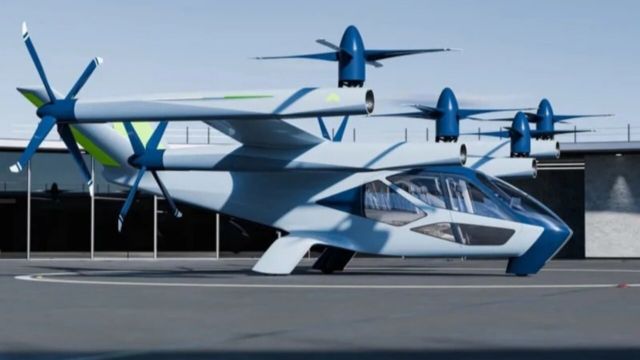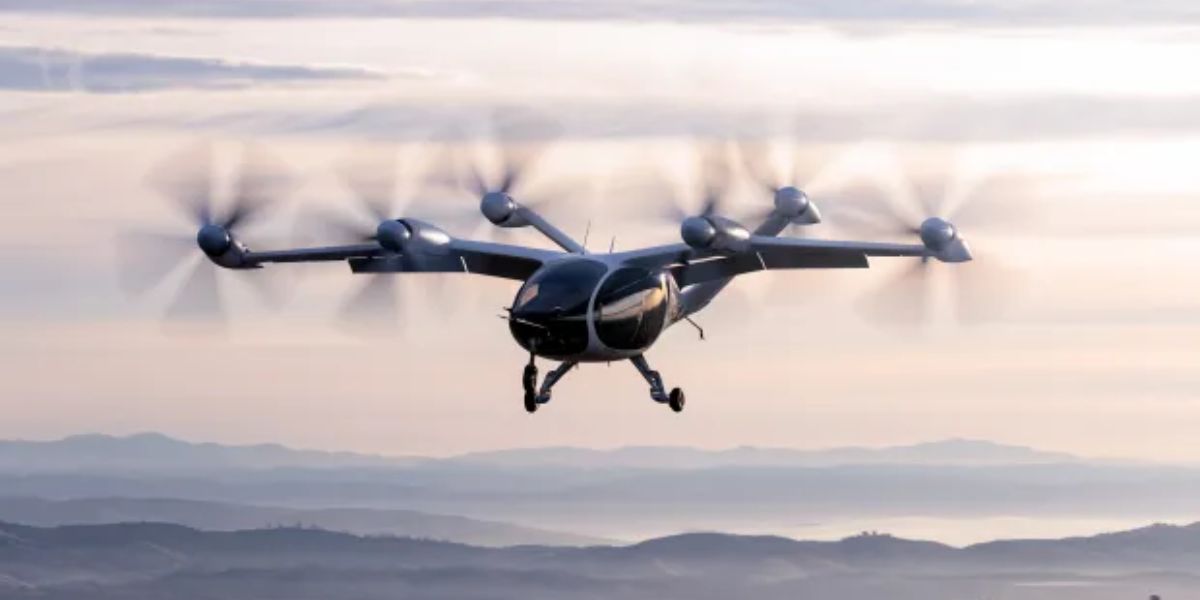WFCN –
The founder of Joby Aviation, Joe Ben Bevirt, dreamed of building a flying car while strolling through the secluded Santa Cruz foothills covered with redwoods on his way home from school.
Since I was a young lad, this has been my dream, Bevirt stated. “I wanted people to be able to travel from point A to point B in a better way.”
Bevirt established Joby Aviation, a Santa Cruz-based business, fifteen years ago. The company is working on creating an electric aircraft that can fly like an airplane but can take off and land vertically like a helicopter. For use in the Bay Area and beyond, the business is constructing a fleet of air taxis that will be 100 times quieter than helicopters and nearly twice as fast. According to corporate representatives, the five-seater aircraft might start flying as early as next year.

The only people speeding across the sky in flying cars in the 1970s were the families from the space-age television show “The Jetsons.” But there’s a lot of rivalry these days.
Bay Area commuters may be able to call an electric plane similarly to how they do an Uber at some point in the not too distant future. Electric single-passenger aircraft are already available for quick journeys and leisurely rides. With innovations like Joby, LIFT, Wisk, and Archer Air, individuals will soon be able to take short journeys to work and travel longer distances by air thanks to technology.
SEE MORE –
Amazing Advantages For You! Lower Your Electric Bill With These 7 Cost-Effective Tips
Joby’s plane can reach a maximum distance of 100 miles and reach top speed of 200 mph on a single charge. According to company representatives, the aircraft has four battery packs, six propellers, and emits no emissions when in operation.
Over the last seven years, Joby has flown more than 33,000 miles with its full-scale prototype of an electric vertical takeoff and landing aircraft, known as an eVTOL. The company is currently awaiting certification from the Federal Aviation Administration, a necessary step before Bay Area residents can board.
Recently established in San Jose, Archer Aviation said on Friday that it has partnered with Southwest Airlines to provide air taxi services.
According to the firm, Archer already operates Midnight, a piloted, four-passenger aircraft that is intended to conduct quick back-to-back flights with little to no charge time in between. Archer aircraft will have access to the 14 airports in California that the airline serves as a result of the Southwest agreement.
In addition, Archer and Kilroy Realty Corp. intend to build a vertiport in the water next to the development company’s South San Francisco Oyster Point buildings. According to Archer, the vertiport will also serve as a “sea portal” for electric-powered ferry services across the Bay.
The Austin, Texas-based LIFT Aircraft is already renting out its HEXA electric plane, which resembles a big drone more than an actual aircraft. CEO and founder Matt Chasen stated that the single-seat aircraft can go 10 miles in approximately 10 minutes and can reach altitudes of up to 1,200 feet at a speed of 60 mph.
The aircraft will be brought to the Bay Area by the corporation so that individuals can do quick flights or joyrides around the area. Although the aircraft is not need to get FAA approval to fly because it is classified as a “ultralight vehicle,” it is not permitted to fly over crowded regions like busy freeways.
The initial experience lasts approximately two hours and costs approximately $250. It consists of ground instruction, operating the aircraft in a virtual reality flight simulator, plus flights. After receiving training, users can pilot HEXA on their own with the help of flying instructors via remote direction, paying between $50 and $100 per trip.
“We’re offering the opportunity to enter a new era of mobility, not just entertainment,” Chasen remarked. “We’re expanding the realm of aviation’s potential.”
In addition, Wisk Aero, a Mountain View-based company, last year underwent a $300 million acquisition to become a fully-owned subsidiary of Boeing. Airbus, Boeing, and Embraer are all now developing electric aircraft.
Wisk hopes to have its Generation 6 eVTOL airborne by the end of the year, and by the end of the decade, it wants to have certified an autonomous aircraft.
On Monday, July 1, 2024, Wisk Aero will unveil their Generation 6 cabin, a four-seater, self-flying, all-electric air taxi, at their Mountain View, California, headquarters. This is just the cabin; the entire aircraft has 12 propellers and a wingspan of more than 50 feet. (Source: Bay Area News Group/Nhat V. Meyer)
But some experts in transit are paused by the booming electric flying taxi industry.
Advanced Air Mobility (AAM) is the term used to describe a group of new and developing technologies for new types of aircraft, however there may be obstacles, according to Adam Cohen, a senior transportation researcher at UC Berkeley and the Mineta Transportation Institute at San Jose State University.
The question of whether or not passengers should use air taxis to locations that are now well-served by public transportation is one of policy, according to Cohen. “And I believe that this raises the question of whether we are investing in AAM at the expense of other public investments?”
The chief product officer of Joby, Eric Allison, stated that the company’s intended air taxi service is unlike any other form of air travel. The business has created an app that matches travelers with accessible planes and landing locations.
According to Bonny Simi, president of operations at Joby, the company intends to operate not only domestically but also worldwide, including in places like Dubai, in collaboration with the US Department of Defense.
“We anticipate that travelers will make on-demand reservations and board an aircraft in a matter of minutes, quite similar to what it’s like to use ground-based ridesharing today. That forced us to completely reevaluate the aircraft’s operations and software,” said Allison.
According to company officials, the fare will be somewhat more than that of using the more expensive Uber Black, and it might just cost a few bucks each mile.
Cohen stated that there are still “questions regarding the accessibility of these services and whether they will be affordable for the general public.”
